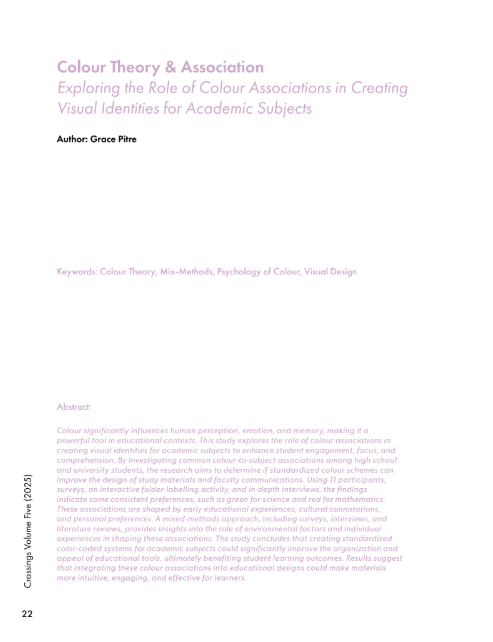Colour Theory & Association
Exploring the Role of Colour Associations in Creating Visual Identities for Academic Subjects
DOI:
https://doi.org/10.29173/crossings328Keywords:
Colour Theory, Mix-Methods, Psychology of Colour, Visual DesignAbstract
Colour significantly influences human perception, emotion, and memory, making it a powerful tool in educational contexts. This study explores the role of colour associations in creating visual identities for academic subjects to enhance student engagement, focus, and comprehension. By investigating common colour-to-subject associations among high school and university students, the research aims to determine if standardized colour schemes can improve the design of study materials and faculty communications. Using 11 participants, surveys, an interactive folder-labelling activity, and in-depth interviews, the findings indicate some consistent preferences, such as green for science and red for mathematics. These associations are shaped by early educational experiences, cultural connotations, and personal preferences. A mixed-methods approach, including surveys, interviews, and literature reviews, provides insights into the role of environmental factors and individual experiences in shaping these associations. The study concludes that creating standardized color-coded systems for academic subjects could significantly improve the organization and appeal of educational tools, ultimately benefiting student learning outcomes. Results suggest that integrating these colour associations into educational designs could make materials more intuitive, engaging, and effective for learners.

Downloads
Published
Issue
Section
License
Copyright (c) 2025 Grace Pitre

This work is licensed under a Creative Commons Attribution 4.0 International License.

